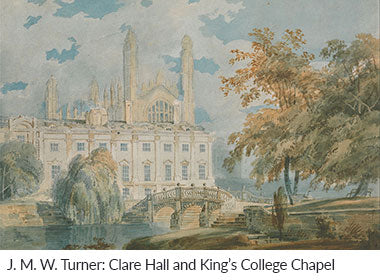My shopping cart
Your cart is currently empty.
Continue ShoppingWhen some people think of watercolors, they think of projects for kids, art classes, and again for the kiddos - that they’re inexpensive and easy to clean up.
Others think the complete opposite, hard to get right, that it gets muddled, and that it’s hard to control. Enough of the misconceptions, sit back and take this time to learn where watercolor comes from and what makes it such a wonderful, worthwhile medium for everyone - kiddos too.

Believe it or not, watercolors have been around for a long time. Watercolors were used by Egyptians on temples, tombs, and then papyrus. But earlier than that, they were used in cave paintings by grinding and mixing natural materials with water. The ingenuity!
What we more commonly think of as watercolor began in Asia. By 4000 A.D in China and Japan, more traditional watercolor was being used for decorative purposes, then took a religious turn and later, became more of an independent art form used in landscape paintings. To be fair, there’s quite a bit of in-between, India, Persia, and other places have watercolor histories too, but we’ll skip that for the sake of time. Let’s not forget that theirs is equally as important to history though.

Now, the renaissance is where it gets a bit more exciting. An artist I greatly admire is Albrecht Durer. Because his paintings were larger in scale and studied by other artists to create their works, he is considered the first master of watercolor. A grand title. He experimented with the medium, developed new methods, and inspired other artists to do the same. Also Inspired by Durer, Hans Bol, another german painter, founded the first watercolor school in Europe.
Durer’s Young Hare painting is one of my favorites. He had an outstanding ability to represent nature and animals using watercolor, capturing the detail and proportions wonderfully.
Okay, I may have gotten a bit ahead of myself by using exciting as the adjective. While the accomplishments of Durer and Bol were enormous, watercolor still wasn’t reveling in all its glory until heading to England.
As creativity and experimentation tingled and quality paper became more readily available, watercolor art began to finally take off. A few notable artists are credited with the big push into the land of respect watercolor deserves. Paul Sandby, Thomas Girtin, J.M.W. Turner.



Paul Sandby was originally a mapmaker. It’s not as far a jump as you’d think, watercolor was a preferred method for creating maps. He used the skills and techniques he’d learned from mapmaking and transitioned into a landscape painter.
Thomas Girtin created large scale, picturesque landscapes, the first to really do so.
J.M.W. Turner, also a large scale romantic landscape artist, was inspired by Girtin. He experimented widely with synthetic watercolor pigments that were available at the time. He pioneered the technique of developing a painting in stages. He started with large areas of color on wet paper and then refined it more and more with other techniques like washes. He created the first personal art gallery and made boatloads of money. #goals.
To prove the rise of the watercolor medium, there were different watercolor societies formed in the 1800s. The Society of Painters in Water Colours in 1804 and the New Water Colour Society in 1832. The New Water Colour Society is better known as the Royal Institute of Painters and still exists today.
Fun fact, early impressionist painters were influenced by the free and light brush strokes that became prominent through the English School of Watercolor Painting. Also, in the 19th and 20th centuries, artists like Winslow Homer, John James Audubon, Vincent Van Gogh, and Kandinsky used watercolor in some of their paintings. And don’t let me forget my Sun Prairie sister Georgia O’Keeffe - I have a blog all about her and our connection if you’re interested.
There are obviously so many more notable artists in all these years we’ve whipped through. These are just some of the most influential artists of the time. We’d be here allll day if not for editing, I promise.
This is why I absolutely adore teaching. I feel a responsibility to share what I’ve learned with different generations and walks of life, not just with watercolor but art in general. To take the fear out of it and to continue the passion for art that has given us centuries of masterpieces, whether it be oils, acrylics, charcoal, watercolor, or the many others.
Are you not absolutely fascinated by how long watercolors have been a part of the art world and all the little tidbits that go along with it? Mind you, this doesn’t even scratch the paint filled surface. There’s so much more!
There’s a sad but beautiful aspect to the history of watercolor. An underdog’s story if you will. Whatever fears there are about using watercolors, I’m officially here to say you can do it and you will be forever elated that you did.
There are umptine reasons why watercolor not being a more celebrated art form, even with its shining moments, its golden age, even as it’s recognized today, is just BS. It really is one of the most versatile, honest, and incredibly rewarding mediums I use and is obviously my go to. Don’t get me wrong. I love oils, just with a different, somewhat smaller part of my heart.